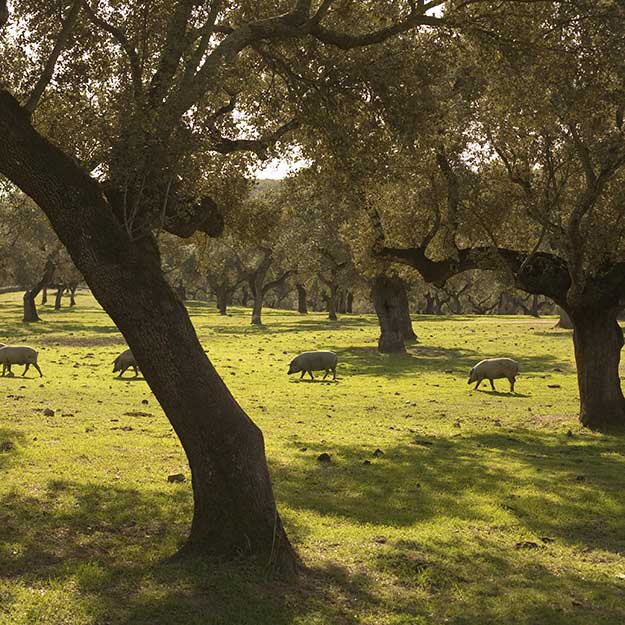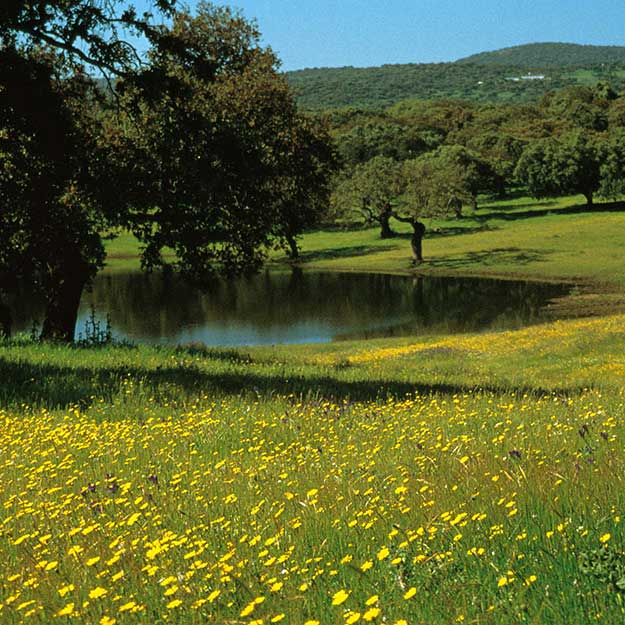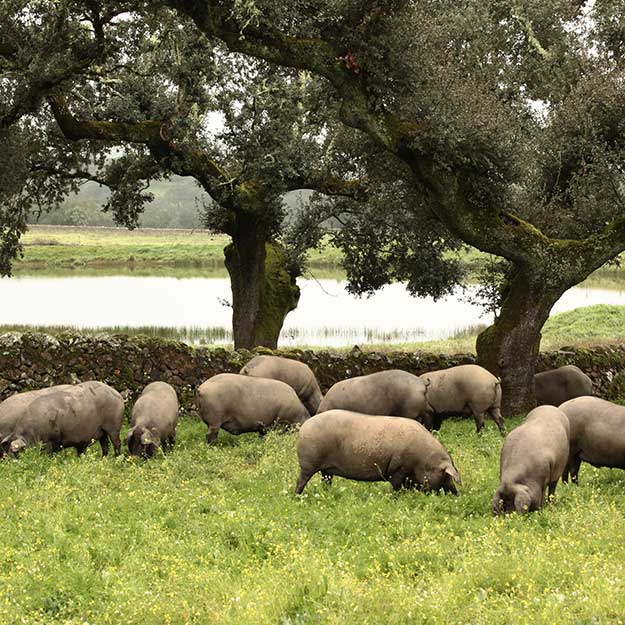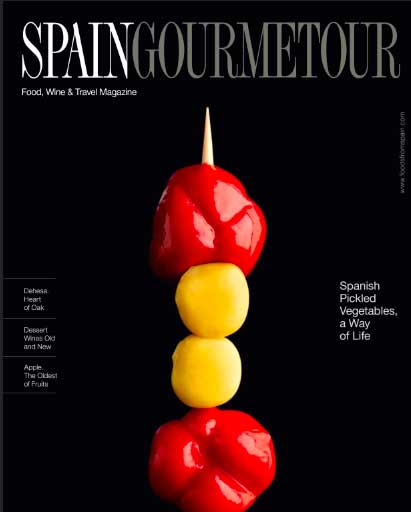.png.transform/rendition-xs/image_image%20(1).png)
Discovering dehesas
The dehesa is one of Spain's most beautiful and authentic landscapes, and completely unique on the Iberian Peninsula. It is said that two thousand years ago, the whole country was covered by these meadows, where holm oaks and cork oaks grow, and where the ground is cool and covered with a blanket of grass.

They are a rich source of life and when, towards the end of March the montanera comes to an end and the pigs stop feeding, they are replaced on the grazing pastures by reddish colored cows, which make fantastic meat, and then merino wool sheep, yielding milk used to produce great cheeses.
Plowing and the preference for agriculture over livestock farming have been reducing the size of the dehesas over centuries. Nowadays they are mainly to be found in the western part of the country, near the border with Portugal, in the provinces of Huelva, Badajoz, Cáceres and Salamanca, and in some parts of the provinces of Ciudad Real and Córdoba.
The greatest concentration, of both dehesas and Ibérico pigs, is to be found in Extremadura, with the majority of animals being reared in this province before being taken to slaughter in other regions. The town of Jerez de los Caballeros in Badajoz, is considered to be the capital of the dehesas, and a major event is held every year for lovers of this product, the Jamón Ibérico Fair.
A Special Breed: Ibérico pigs

Many people think that both Ibérico ham and the pigs it comes from are two of Spain's most important contributions to world gastronomy. Ibérico pigs belong to a special breed, which has inhabited the Iberian Peninsula for thousands of years. They are small black and brownish animals, with a good fat layer and distinctive black trotters. Curiously, in the 1950s they were on the verge of disappearing, not only due to the dwindling area covered by the dehesas, but also because of competition from more productive white pigs from selected central European breeds.
The odds seemed to be stacked in favor of white pigs. The larger and plumper of the two breeds, white pigs stay in their pigsty and are fed on pellets, putting on a huge amount of weight in a short time. They also produce leaner and less fatty meat, have large litters of piglets and are disease resistant.
In comparison, Ibérico pigs are just the opposite, small, needing to be out in the open air of the dehesa to wander around in rather than staying inside the pigsty, they are tremendously fatty, not terribly prolific breeders and being outside makes them more susceptible to disease.However, Ibérico pigs have one thing on their side, they transform the essential fats from the acorns they eat into the marbled fatty tissues that runs through their meat, giving it a unique aroma, flavor and shiny appearance.
Through the Dehesas

The capital of the dehesas region is Jerez de los Caballeros, in the south of the province of Badajoz, but our route begins 25 km / 15.5 miles earlier, in Fregenal de la Sierra. A major pig-rearing town set against the Sierra Morena mountains, it is surrounded by dehesas and has a real countryside atmosphere to get you into the mood for your journey and for enjoying the delicious pork products for which this area is renowned.
Taking the N-435, Jerez de los Caballeros is only a few minutes away, nestled against the slopes of the same mountain range. This small and friendly town has the typical whitewashed houses on one side and a fortress on the other. The caballeros (knights) after whom the town is named were the Knights Templar, who snatched it back from the Arabs during the Reconquest (the period in Spanish history between the 8th and 14th centuries of the rise and fall of Arab dominion over the Iberian Peninsula) and who built the fortifications, which are still very well preserved even today.
Jerez de los Caballeros is known as the town with four towers, San Bartolomé, San Miguel, Santa Catalina and Santa María, all beautiful buildings, particularly the first two, which date back to the 15th century. It also has many churches, monasteries and buildings linked to the nobility.
Leaving Jerez and heading towards Badajoz, the road takes you through the typical dehesas countryside. It is well worth visiting Olivenza, one of the prettiest towns in the whole province. It belonged to Portugal until 1801 when, following the Oranges War, it became part of Spain. Its Portuguese past can be clearly seen from the vast amount of Manueline art all over this small town. The style became popular during the reign of Manuel I of Portugal, between the 15th and 16th centuries.
The best example is probably Magdalena church, which is very famous for its twisted columns and tiles. The town's other attractions include its fortress, white streets and a very pleasant pedestrian area. Take a look also at the nearby Ajuda bridge over the river Guadiana, a natural border with Portugal, and ask a local the same question as in Jerez de los Caballeros: "where can we see a dehesa and enjoy being in a unique natural setting?".
Would you like to read the whole article? Click in the image below
Text: Paul Richardson /@ICEX


